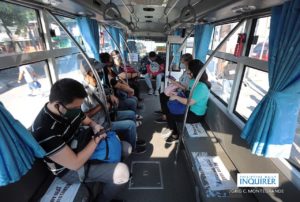In the previous column, I mentioned how forward-looking local government units (LGUs) were using technology, particularly contact-free payment system apps, to facilitate government transactions and distribute aid to their constituents.
With the impending opening of classes, LGUs are faced with another challenge as quarantine rules like physical distancing make face-to-face interactions difficult, if not impossible. Distance learning and digital readiness are both critical and costly. Some LGUs like Manila and Pasig plan to provide laptops and other gadgets to students and teachers while others are eyeing modular learning systems or online streaming.
However, the key to successful blended learning is not to make life hew as close to the old normal as possible. It is creating a “new normal” that maintains, even improves, the quality of life of students. And the biggest hurdle, sadly, is the lack of access to online facilities among the less fortunate. For those given free devices, there is a danger of these gadgets being misused by the users or their families, either for online gaming or in the downloading of materials that are not class-related.
With great interest, I see Makati showing the correct way to approach these problems. Mayor Abby Binay will be distributing a learner’s package (comprising of an on-the-go, or OTG flash drive, printed modules and two washable face masks) along with free load equivalent to five hours of daily internet access to some 85,000 students from preschool to senior high school.
The city’s public school teachers will also get free internet load for online classes and activities, “replenished daily even during weekends.” To safeguard against possible online abuse, the city government is limiting the sites that can be accessed online.
If the internet is down or in case of unforeseeable eventualities, students can use the OTG flash drive. It contains digital learning modules, including videos, illustrations, interactive exercises and other offline learning modalities developed by the Department of Education-Makati. Teachers can upload or update the week’s lessons on the OTG flash drive, which can be claimed by parents, along with a printed version of the educational materials.
If gadgets are unavailable or internet access is problematic, students can also answer printed learning modules that their parents can submit to teachers.
That said, blended learning remains Makati City’s main objective. Google Classrooms, Google Meet, Facebook Messenger and other communication apps will be available for internet-based teaching and follow-up sessions.
Enrollment in the city for this school year has also gone digital. All parents need to scan the QR Code directing them to the SDO-Makati OnE app to fill out an application form. Or they can fill out the learning enrollment and survey form available at their barangay hall and drop this in designated boxes at the enrollment kiosks of their school of choice.
Binay knows the success of the program is anchored on the cooperation of parents so she has asked them to support the city’s initiatives and guide their children in their daily classes.
Parents must also put their children in the proper mind-set and prepare them for the new setup.
Admittedly, this will not be easy. While Makati City can very well afford to provide tablets for all 85,000 students, it chose blended learning instead. With resolve and a keen understanding that technology should not be a hindrance, Binay is confident her online education strategy will be “better and safer” for every student.


